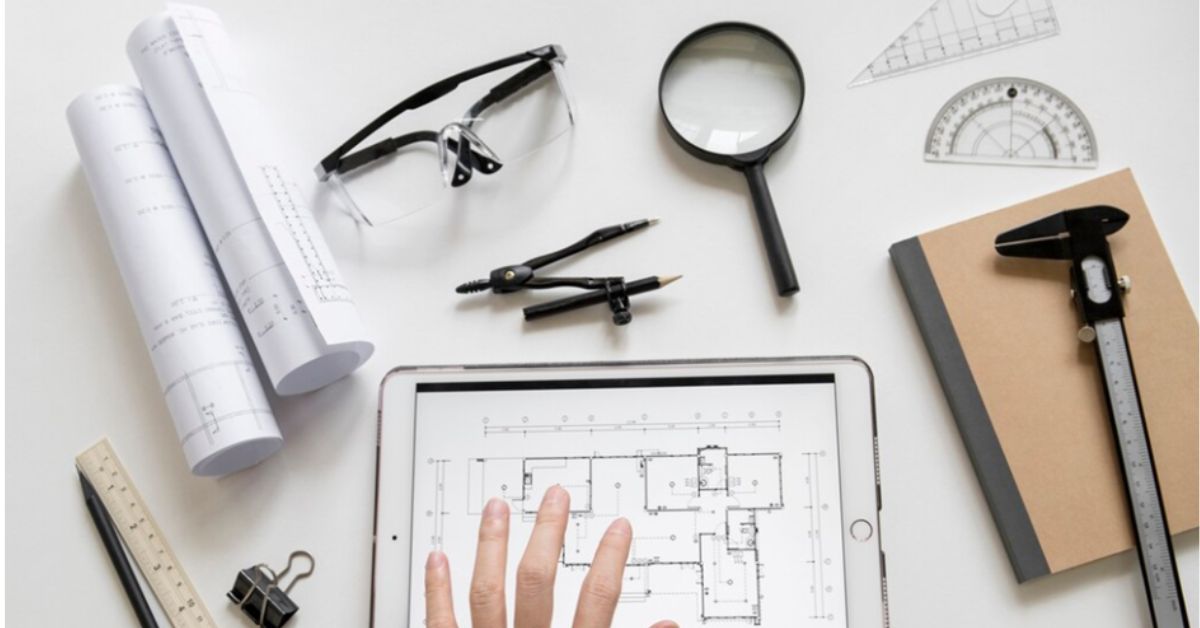Designing an efficient floor plan is a crucial step in maximizing the use of space and ensuring comfort and functionality within a home or commercial environment. Whether it’s a small apartment, a large house, or an office building, a well-thought-out floor plan enhances the flow of daily activities and improves the overall atmosphere. Utilizing a floor plan maker can simplify the design process, allowing anyone—from beginners to professionals—to create accurate layouts and visualize spaces in a practical and user-friendly way. This article provides valuable tips for designing efficient floor plans with the help of a floor plan maker.
Understand the Purpose of the Space
The first step in designing an efficient floor plan is understanding the purpose of the space. Every area has specific requirements that will guide the layout and functionality. For residential buildings, consider factors like the number of rooms needed, privacy, and how people will interact within each space. In commercial settings, think about the workflow and how different areas will be used by employees or customers. An effective floor plan addresses the needs of its inhabitants while ensuring practicality and comfort. Whether the goal is to create an open and social environment or a more segmented and private layout, understanding the purpose of each space will help create a more focused design.
Assess the Space’s Dimensions
Accurate measurements are essential when designing a floor plan. Whether the space is an existing building or a new construction project, the dimensions of walls, windows, doors, and other structural elements must be carefully measured. A floor plan maker allows for precise input of these dimensions to create an accurate representation of the space. This step is critical in ensuring that rooms and features like furniture, storage units, and appliances fit properly within the designated space.
Make sure to account for things like ceiling heights, which can affect how the space feels. For example, taller ceilings can create a sense of openness and airiness, while lower ceilings might make a space feel cozier or more intimate. A well-measured floor plan will help avoid any mistakes later on when it comes to fitting furniture or planning for electrical outlets, lighting fixtures, and other design elements.
Prioritize Functionality
While aesthetics are important in any design project, functionality should always be the top priority. A floor plan that looks great but doesn’t serve the practical needs of the users is not effective. Think about the way people will use the space daily. For example, in a kitchen, the layout should allow for easy movement between key areas such as the stove, sink, and refrigerator. In an office, workspaces should be arranged for collaboration or individual focus, depending on the company’s culture.
Incorporating efficient flow within the space is a key factor in this regard. Ensure that there are clear pathways between rooms and that people can easily move through the space without feeling cramped or obstructed. Additionally, consider placing essential elements such as storage units, bathrooms, and kitchen counters in places that make sense for accessibility and ease of use.
Maximize Natural Light
Natural light plays a significant role in creating a pleasant and inviting environment. When designing a floor plan, it’s important to strategically place windows and glass doors to allow maximum sunlight into the space. This will not only help improve the aesthetic appeal of the interior but also promote better air quality and a healthier atmosphere.
In residential spaces, consider placing larger windows in living areas like the living room or dining room, where people spend the most time. In bedrooms, it’s often best to place windows in a way that provides privacy while still letting in sufficient light. Avoid creating dark, closed-off spaces by planning for adequate window placement in every room. This can help maintain a bright and open atmosphere.
Create Flexible Spaces
In today’s world, flexibility is increasingly important in design. Rooms that can serve multiple functions are highly desirable. For instance, a guest bedroom could double as a home office or a playroom for children. In office spaces, having meeting rooms that can be reconfigured for different types of work or collaboration is beneficial.
To achieve this, it’s important to design rooms with flexibility in mind. This can be done by incorporating movable walls, multifunctional furniture, or simply allowing enough space for future adjustments. The idea is to create a layout that can adapt to changing needs over time without requiring major alterations. A floor plan maker can help visualize these changes and assess their impact on the overall design before implementation.
Incorporate Storage Solutions
Storage is often an afterthought in many floor plans, but it is essential for maintaining an organized and clutter-free space. When designing a floor plan, be sure to incorporate adequate storage solutions that blend seamlessly into the design. This might include built-in shelving, cabinets, or hidden storage compartments that save space while offering plenty of storage options.
In residential spaces, consider adding closets in bedrooms, under-the-stairs storage, or overhead cabinets in the kitchen. In commercial settings, look at creating storage areas in hallways or unused corners to keep office spaces tidy. By anticipating storage needs early in the design process, it is possible to create a more functional and visually appealing space.
Optimize Furniture Placement
Furniture placement can significantly affect the overall flow of a space. When designing a floor plan, think carefully about how furniture will be arranged in relation to the room’s features, such as windows, doors, and walls. For example, in a living room, positioning seating around a central focal point, such as a fireplace or television, can create a cozy, inviting atmosphere. Avoid placing furniture in ways that obstruct natural pathways or block windows, as this can make a room feel cramped and disconnected.
A floor plan maker can be particularly useful when experimenting with different furniture layouts. You can create and modify furniture arrangements in real time, allowing you to see how changes affect the overall flow and functionality of the space.
Consider the Flow Between Rooms
Flow is a critical component of any well-designed space. It refers to how people move between different rooms and how spaces interact with one another. A good floor plan ensures that rooms are logically connected and that traffic patterns are intuitive. For example, when designing a home, the kitchen should be easily accessible from both the dining room and the living room, while bathrooms should be centrally located for convenience.
To create an efficient flow, avoid placing too many doors or walls in a way that creates bottlenecks or unnecessary obstructions. Open floor plans can help to improve flow, but even in homes with more segmented layouts, it’s important to maintain a sense of connection between the different areas. Think about how the occupants will transition from one space to another and aim to make these movements as smooth and effortless as possible.
Plan for Future Growth
When designing a floor plan, it’s also important to plan for the future. People’s needs change over time, and what works now may not be suitable in a few years. For instance, a family with small children may need more bedrooms as the children grow, or an office space may need additional meeting rooms as the company expands.
Designing with flexibility and future growth in mind can help ensure that a space remains functional and adaptable for years to come. This might mean leaving room for additional rooms, creating multi-use spaces, or incorporating design elements that can easily be modified as needs evolve.
Final Thoughts
Designing an efficient floor plan is a balancing act that requires careful thought and attention to detail. With the help of a floor plan maker, the process can be simplified, enabling anyone to create a layout that is functional, comfortable, and aesthetically pleasing. By understanding the space’s purpose, accurately measuring the area, prioritizing functionality, maximizing natural light, and considering flexibility and future growth, it is possible to create a design that meets the needs of its inhabitants and stands the test of time. Whether for a home or commercial building, a well-designed floor plan has the power to enhance the quality of life and improve overall productivity.











